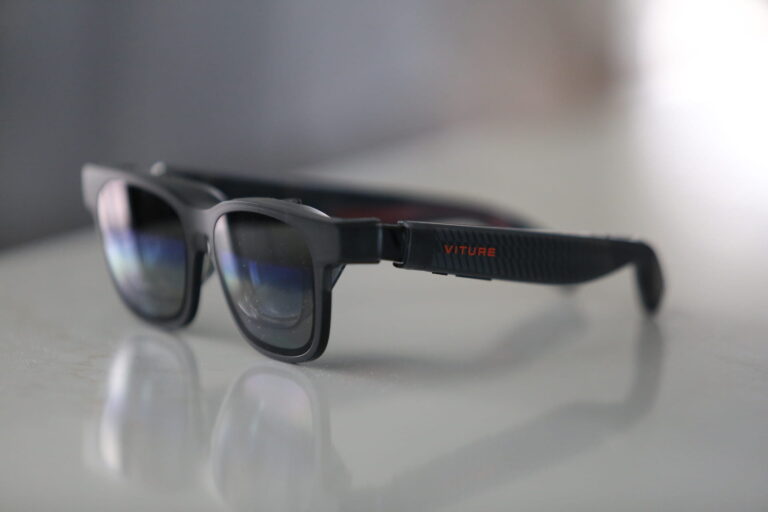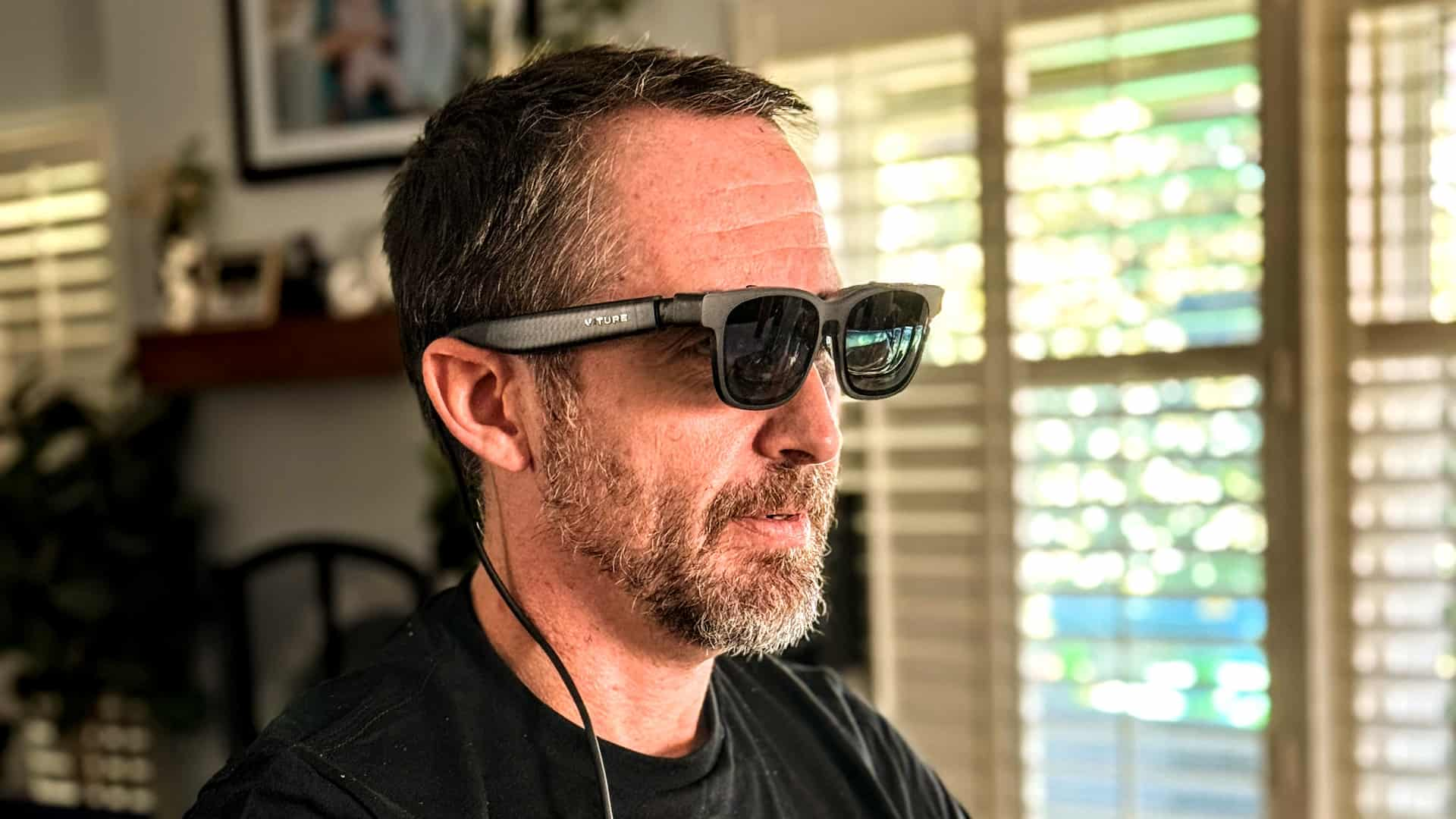
VITURE has emerged as one of the fastest-growing players in XR. IDC reports that it captured a 52 percent market share in U.S. display-glasses sales in Q4 2024. And our research arm, ARtillery Intelligence, estimates a similarly-escalating market share on a global basis.
In a broader sense, VITURE sits within a category that itself is rapidly expanding. Display glasses from the likes of Xreal and VITURE zero in on a focused use case: private and massive virtual screens to mirror gaming and entertainment from consoles, PCs, and smartphones.
Not only is this focused – a hallmark of the ‘reality check‘ in the XR sector – but it taps into a resonant use case. As our survey research validates, most people don’t yet want highly-immersive experiences and 6DoF gaming, but rather elegant ways to display familiar media.
Back to VITURE, it recently doubled down on its momentum by announcing four new devices to succeed its highly-rated previous-generation flagship, VITURE Pro. These latest models include Luma, Luma Pro, Luma Ultra (launching this month), and the Beast (launching in the Fall).
We recently had the chance to spend time with Luma Pro – the highest spec’d of these devices available today. The user experience was compelling in a range of scenarios we tested. Moreover, it opened our eyes to the broader market opportunity for this device class.

Big & Bright
Jumping right in, one of the first things noticed when unboxing and firing up Luma Pro is its plug & play ease. Though additional levels of functionality can be unlocked through specific configurations (more on those in a bit), the foundational display mirroring works out of the box.
Plugging Luma Pro into any USB-C device gives you immediate-gratification screen mirroring. This is elevated by one of Luma Pro’s hallmarks: brightness. It outputs 1,000 nits of peak brightness, which amplifies HDR and specular highlights in its Sony Micro-OLED panels.
Speaking of displays, they offer 1920×1200 resolution and a 52-degree field of view (up from 48 degrees in Viture Pro) – the equivalent of a 152-inch screen, viewed from 10 feet away. But the most noticeable feature is display sharpness, which is up 50 percent from Viture Pro.
Back to the setup experience, another Luma Pro hallmark is its fit mechanisms. Three magnetic nose-bridge inserts can be swapped in and out to accommodate various face shapes. These work in tandem with snapping angular display adjustments to refine the perfect eyebox.
Built-in diopters can also adjust myopia (nearsightedness). This alleviates another common AR hardware issue: eye-relief (the space between lenses and your eyes). That’s an issue for glasses wearers, often requiring custom inserts to be ordered at additional cost.
Through its Paces
As for the experience itself, we put Luma Pro through its paces with varied content sources and ergonomic positions. As a productivity device while sitting upright at a desk, it was satisfying – elevated further by 3DoF functions and world-locked screens (more on that below).
Keyboard orientation is always an issue with XR devices, but Luma Pro’s prism lens adjustments let you toggle between transparent and opaque modes. The former lets you see your keyboard and other items by glancing down, while the latter is optimal for lean-back entertainment.
That brings us to our favorite use case: cinematic content. We treated this as an opportunity to finally watch Foundation. The show’s intro sequence features tiny particles that fly around and take shape – a good demonstration of Luma Pro’s capabilities with specular highlights.
As A/V geeks, we appreciated the size, brightness, and overall viewing experience that Luma Pro offers. In fact, it’s the most cost-efficient way to experience OLED and all its contrasty glory, given that OLED TVs with comparable perceived screen sizes break the bank at $5,000+.
This makes Luma Pro a good choice for city dwellers who have space or noise/neighbor issues. Or if you have a fancy home theater, you may find (as in our case), that it’s dominated by kids. Being present with family while switching on private/personal content in Luma Pro was elegant.
Elevated Experiences
All the above speaks to Luma Pro’s foundational screen mirroring. What about the elevated experiences teased above? There are a few that the device can do in its current form, and others coming via software updates – a consumer-friendly move that VITURE is known for.
One of these elevated features is to activate 3DoF functionality to view three wrap-around screens that are world-locked. In other words, expanding from the basic functionality where the screen moves with your head movement, this upgrade lets you pin screens to a fixed space.
But perhaps more compelling is VITURE’s Immersive 3D technology. It lets you view existing media that comes to life in 3D stereoscopic glory. It does this on the fly with 2D media – a seemingly magical experience, and a streamlined variation on Apple’s Spatial Media Toolkit.
By doing this, VITURE has effectively created an additional use case to drive demand for its hardware. And it does so in a way that sidesteps the onerous and chicken-and-egg-challenged requirement that many XR players face: cultivating a native content ecosystem.
Both the 3DoF and Immersive 3D functions require VITURE’s Spacewalker app, which works on most modern devices. We should also mention that Luma Pro is further enhanced by its Pro Mobile Dock, which extends device battery life, HDMI connectivity, and multiplayer support.
New Study Projects Headworn AR Revenue to Reach $13 Billion by 2029
Building on the Familiar
Coming full circle to the rise of display glasses, VITURE is charging forward in what could be a two-horse race with XReal. There are other venerable players in this segment (a separate article), but XReal and VITURE currently have the most market share and momentum.
Meanwhile, the broader display glasses category is primed for ample headroom. For reasons noted, the format has the right balance of focus and broad applicability. Together, this engenders a sizable addressable market with a primary use case that builds on the familiar.
That last part is a key consideration as consumers often need training wheels to adopt emerging tech en masse. Beyond cultural acclimation, Luma Pro benefits from plug & play compatibility with ubiquitous devices, and don’t require a native content ecosystem as noted.
But all the above speaks to the present. Viture has also established a path to the future. This involves expanding beyond fundamental screen mirroring and 3DoF enhancements to more dimensionality and 6DoF positional tracking. This can be seen in already-embedded sensors.
The idea is that – like dimensional AR devices – it could scan and sense a user’s surroundings in order to augment it dimensionally. Use cases include everything from world-locked and persistent screens around your home, to AI assistants that offer ambient situational intelligence.
AR Briefs, Episode 86: Smart Glasses and the Art of the Possible
Beefing Up & Slimming Down
That evolutionary path brings us back to the XR “reality check.” The previous paradigm (think: Magic Leap) was to aim for the most robust visual UX – device size and cost be damned. Now we’re seeing the inverse approach, where wearability and toned-down UX are the standard.
Put another way, previous approaches endeavored to create the most stunning visual experience possible… then spend years slimming down. The inverse approach is to design AR hardware that people will actually wear… then spend years beefing up the visual experience.
We’re in the midst of an industry-wide transition to the latter, as the former (mostly) didn’t work. And it applies broadly – from non-display AI glasses to flat AR glasses that will flow from the Android XR world. VITURE likewise carries this principle, with years of UX evolution to come.
